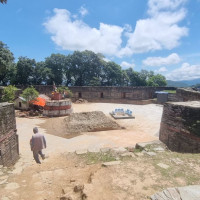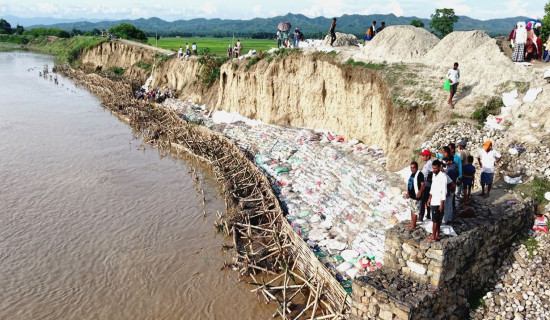- Wednesday, 16 July 2025
Education Key To Preventing Snakebites
Snake bites pose a serious threat to public health, particularly in rural and agricultural areas of tropical and subtropical nations. Hundreds of thousands of people worldwide are bitten by venomous snakes each year, and many of them die or suffer permanent physical and psychological harm. However, with the correct mix of community action, infrastructure upgrades, and education, snake bites can be largely avoided. In addition to saving lives, preventing snake bites also protects livelihoods and eases the burden on healthcare systems. The World Health Organisation (WHO) estimates that up to 5.4 million people worldwide are bitten by snakes each year, resulting in up to 2.7 million envenomations and up to 138,000 fatalities.
The brunt of the burden falls on rural populations in sub-Saharan Africa, South Asia, and Southeast Asia, where access to treatment facilities is limited. Most of the snake bite victims are farmers, labourers, and children. The majority of snake bites are caused by environmental, behavioural, and systemic variables. People living in snake-prone areas often lack a basic understanding of the snakes that coexist with them. Therefore, prevention efforts need to begin from the grassroots level, but they also need the support of other stakeholders such as policymakers and health professionals.
Education
Education is one of the best strategies to reduce snake bites. Many people lack the knowledge necessary to recognise or comprehend the behaviour of venomous snakes. People can prevent dangerous contacts by educating communities about local snake species, their habitats, and active hours. For example, when snakes are more active during the monsoon season or at night, the majority of snake bites occur. The danger of getting bitten can be significantly decreased by applying basic knowledge, such as keeping living areas clean, avoiding barefoot walking in tall grass, and wearing a flashlight at night.
Programmes that are implemented in schools can be especially successful. Children may become safety ambassadors in their homes and communities by learning how to avoid snakes and what to do if they are bitten. Important information can also be disseminated in local languages using mobile apps, radio messages, and posters. People who sleep on the floor at night are more likely to get bitten. Thus, promoting the use of elevated beds or placing mosquito nets beneath mattresses can aid in preventing bites throughout the night. Solar-powered lights or flashlights can make a big difference when people are forced to walk in the dark due to a lack of energy and lighting.
In rural areas, it is imperative to promote the usage of boots for walking or farming. Snakes can be kept out of homes by keeping rodent infestations at bay, which attracts them, and by properly disposing of food waste. Among the most susceptible groups to snake bites are farmers and workers, particularly during the planting and harvesting seasons. Workers should be instructed to look at the ground before sitting or sticking their hands in bushes, holes, or beneath rocks. Additionally, they ought to be outfitted in protective gear like boots and gloves. Overgrown grass and bushes should be removed from fields, and farmers should be urged to take regular breaks in areas free of snakes and shadows.
Even with every precaution, snake bites can still happen. When they do, the victim's timely and accurate assistance could be the difference between life and death. Unfortunately, in many areas, first aid solutions are still dominated by home cures and traditional beliefs, which can cause more harm than benefit. Effective first aid techniques, such as telling the victim to remain calm and not move, splinting the injured limb to prevent cuts, applying tourniquets, and taking the victim right away to the closest medical facility, must be taught to communities.
Improving medical care access is equally vital. Antivenom, qualified personnel, and procedures for handling snake bites should all be available at rural clinics. Emergency transport can significantly cut down on treatment delays. Prevention of snake bites should be incorporated into public health strategies by health agencies and local governments. In addition, prevention efforts must respect and incorporate local knowledge and culture. In many communities, snakes hold religious or spiritual significance; working with traditional healers and religious leaders can help debunk myths and promote scientifically sound practices.
Preventative plan
Importantly, snake conservation must go hand in hand with bite prevention. Snakes play a crucial role in ecosystems by controlling rodent populations, and killing them indiscriminately is not only ineffective but also ecologically harmful. These strategies include funding community health worker training, antivenom availability and cold chain maintenance, infrastructure development, and public awareness campaigns. A key component of any preventative plan is teaching people to identify non-venomous snakes and promoting non-lethal removal techniques.
The goal of preventing snake bites is a difficult but achievable goal. It necessitates a multifaceted strategy that includes policy support, community involvement, healthcare access, infrastructure, and education. We can reduce the threat that snakes pose to human life, even while we cannot and should not eradicate their presence. Every snake bite avoided saves a life, spares a family from suffering, and advances the safety and harmony of our shared settings.
Although they may not receive much media attention, snake bites have a loud impact on the lives of the individuals they affect. We must pay attention, take action, and make a commitment to a society in which going for a night's sleep or a stroll through the fields is not a death-defying bet. Not only is prevention feasible, it is imperative.
(Dr. Lohani is the executive director at the Health Concern. lohanis@gmail.com)
















